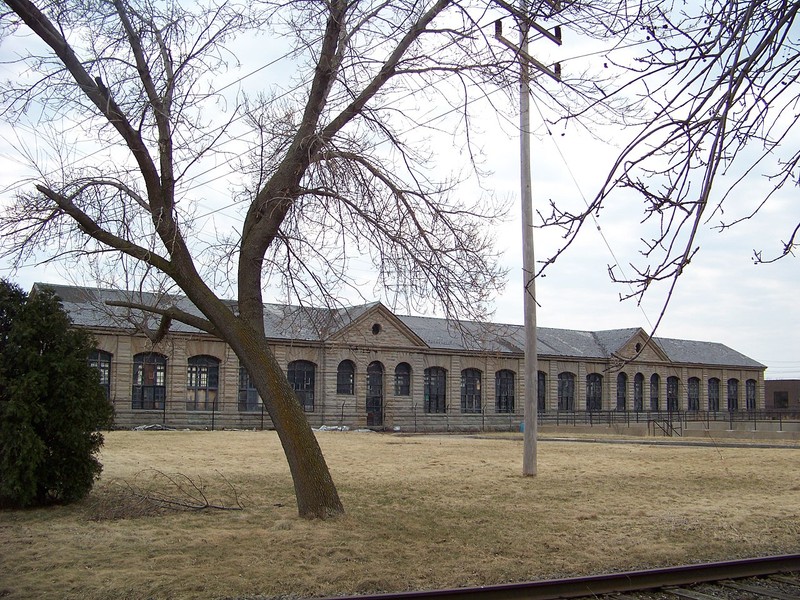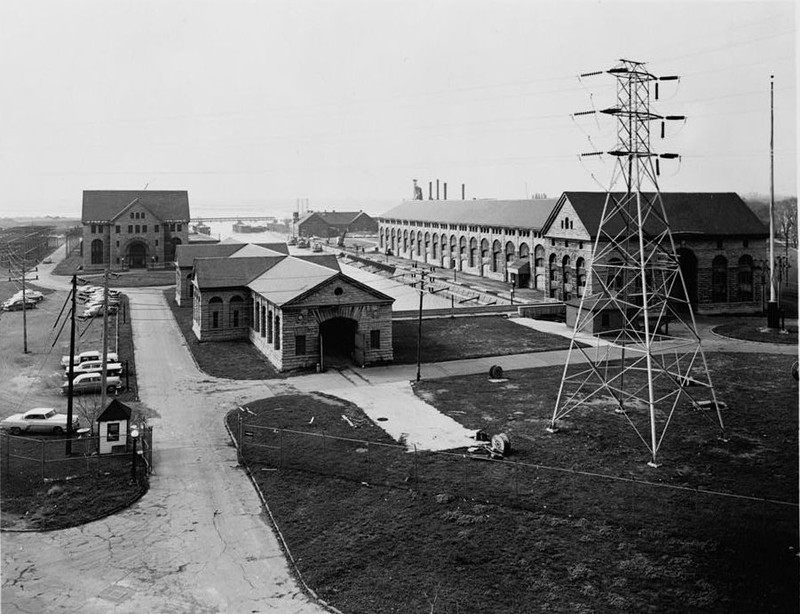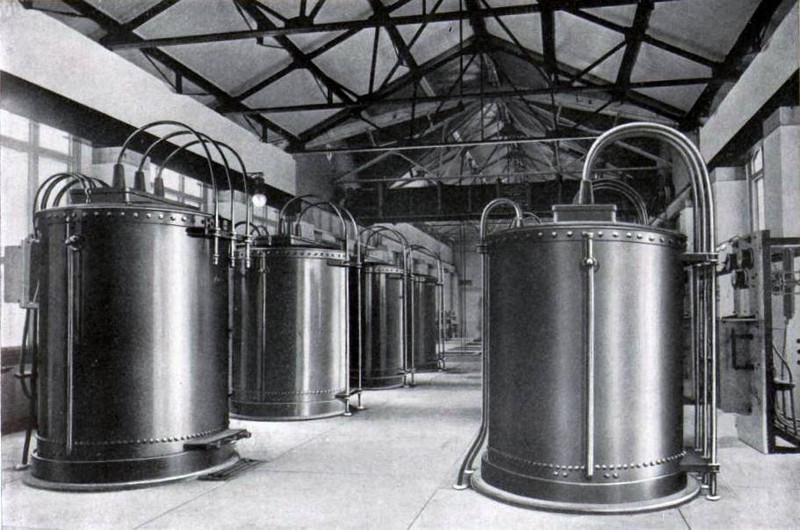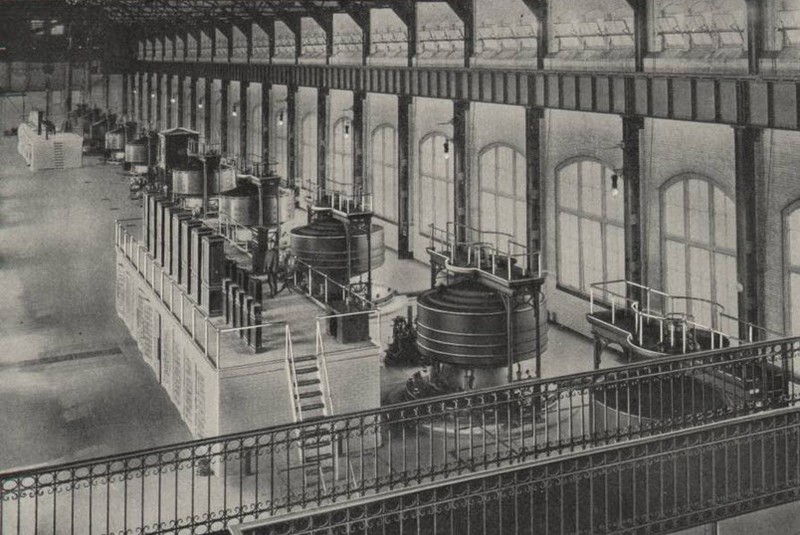Adams Power Plant Transformer House
Introduction
Text-to-speech Audio
This historic building was once part of the Edward Dean Adams Power Plant which became the world's first large-scale, alternating current hydroelectric facility when it went into operation in 1895. The facility was originally called Niagara Power Station No.1 and operated by the Niagara Falls Power Company (NFPC). The Transformer House is the only building of the plant still standing. Designed by famed 19th-century architecture firm McKim, Mead & White in the Beaux-Arts style, the building was constructed using locally sourced limestone and contained several transformers that increased the voltage of the electricity generated in two large powerhouses from 2,200 to 22,000 volts. The Transformer House does not appear to be used today. The building was listed on the National Register of Historic Places in 1975 and was declared a National Historic Landmark in 1983.
Images
The Transformer House is the only building remaining of the Edward Dean Adams Power Plant, which was the world's first large-scale, alternating current hydroelectric facility. The Transformer House is listed on the National Register of Historic Places is also a National Historic Landmark.

The plant complex consisted of the Transformer House in the foreground, Power Station No. 1 on the right and Power Station No. 2 on the left.

Transformer House contained several transformers.

The plant operated several 5,000 horsepower generators.

Backstory and Context
Text-to-speech Audio
A group of leading New York investors including J.P. Morgan and William Vanderbilt founded the Cataract Construction Company (CCC) in 1889 to build the power station for the NFPC, which also established that year. Led by president Edward Dean Adams, the CCC wanted to build a station that would not only supply electricity locally but to Buffalo and other areas as well. This idea was considered radical at the time since it was believed that power generation was only feasible for local areas. At the time, electricity was primarily delivered by direct current (DC), where it traveled in one direction and could only be transmitted inexpensively in short distances. DC is also difficult to convert to different voltages.
However, another type of transmission called alternating current (AC) had been emerging as alternative to DC. In AC, electricity reverses direction many times per second and is easily converted to lower or higher voltages using a transformer. During a test in Germany in August 1891, an AC was transmitted a 100 miles away with minimal loss of power, demonstrating that delivering AC long distances was possible. In light of this development, in December the CCC announced it was going to build a central power station at Niagara Falls. It hired an electric company called Westinghouse Electric (founded by George Westinghouse) to manufacture 5,000 horsepower AC generators, which were built based the work of Croatian electrical engineer Nikola Tesla, who developed a polyphase AC induction motor. The CCC licensed Tesla's patent and named the system at the plant the "Tesla Polyphase System."
The CCC started building a canal and tunnel system for the future plant in 1890. The tunnel was over 1.25 miles long, 21-feet high, and 20-feet wide. Built mostly by immigrant workers between 1890 and 1893, more than 345,000 tons of rock were removed and the walls were lined with millions of 16-inch thick bricks. Water from the canal dropped in a tubes called penstocks and flowed past 30-ton turbines at the bottom that were connected to the generators in the Power Station. The penstocks were housed in a large "wheel pit" directly below the building that was 424-feet long, 17-feet wide, and 178-feet deep. Water then flowed through the main tunnel, which is a called a tailrace, downriver below the American Falls. Twenty-eight workers died during construction of the tunnel. The Transformer House and Power Station No. 1 were built at the same time on either side of the canal. Power Station No. 2 was built in 1899.
The plant began operating in August, 1895 and then on November 15, 1895, its electricity began lit the street lights in Buffalo. It was clear from the outset that the plant was successful, demonstrating the efficacy of AC generated in a centralized station that could supply inexpensive electricity long distances. This was further proven on May 18, 1910 when a plant across the river in Canada collected power from the Adams plant and other plants in Niagara Falls and transmitted it throughout southern Ontario on high-voltage transmission lines. The Adams plant served as the model for subsequent power stations throughout the country and Niagara Falls became known globally as the birthplace of large-scale power generation.
The plant was renamed after Edward Dean Adams in 1927. It operated until 1961 when the Robert Moses Niagara Power Plant was completed. All buildings except the Transformer House were demolished in 1964. However, the Smithsonian Institution and Ontorio Hydro did acquire two generators and other equipment.
Sources
"Adams Plant." Tesla at Niagara Museum. Accessed July 21, 2022. https://www.teslaniagara.org/resources/the-adams-power-plant.
Carlson, W. Bernard (2013). Tesla: Inventor of the Electrical Age, Princeton University Press, p. 167.
Christian, Ralph J. & Gardner, James. "Adams Power Plant Transformer House." National Park Service - National Register of Historic Places Nomination Form. June 1, 1975. https://npgallery.nps.gov/GetAsset/bccab15f-4fe0-4909-82a6-ca499a8883c2.
Gromosiak, Paul. "A Brief History of the Edward Dean Adams Power Plant." Tesla Niagara Museum. Accessed July 21, 2022. http://www.teslaniagara.org/wp-content/uploads/2014/12/261389503-History-of-the-Adams-Power-Plant-PG.pdf.
Lantero, Allison. "The War of the Currents: AC vs. DC Power." U.S. Department of Energy. November, 2013. https://www.energy.gov/articles/war-currents-ac-vs-dc-power.
"Milestones:Adams Hydroelectric Generating Plant, 1895." Engineering and Technology History Wiki. Accessed July 21, 2022. https://ethw.org/Milestones:Adams_Hydroelectric_Generating_Plant,_1895.
Salomon, David. "Adams Power Plant Transformer House." Society of Architectural Historians. Accessed July 21, 2022. https://sah-archipedia.org/buildings/NY-01-063-0011.
All images via Wikimedia Commons
